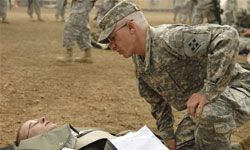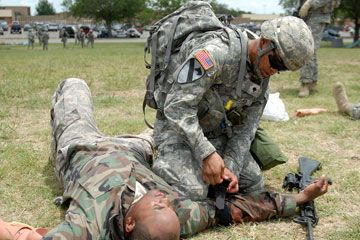Army medics are known as "the angels of the battlefield," and there's no more welcome sight if you're a soldier injured in battle. While battlefield medicine has been practiced in some form since the very earliest conflicts, there have been incredible improvements in the techniques used to treat and transport the wounded, as well as in the survival rates for soldiers injured in the line of duty.
Before Napoleon Bonaparte's military campaigns, the casualties of war were often treated according to rank, not by the severity of their wounds. Napoleon's chief surgeon, Dr. Dominique-Jean Larrey, introduced both the idea of triage and the battlefield ambulance (originally a horse-drawn wagon with a four-person medical crew) for removal of wounded combatants. Larrey was a big fan of immediate amputation, instead of waiting and risking death by gangrene. Napoleon's beloved chief surgeon also legitimized the concept of providing equal treatment to friend and foe alike.
Advertisement
In America, ambulance wagons were scarcely used in conflicts before the Civil War. Civil War dressing stations were located just behind the front lines, and they usually only carried the basics: bandages, surgical tools and painkillers such as morphine, opium and whiskey. Their sanitation practices left everything to be desired, and the uncleanliness of the surgeons, field hospitals and tools led to widespread infections and death among those treated.
As field medicine improved, so too did the survival rate for wounded soldiers -- despite the increasingly varied ways that soldiers injured each other. In World War I, for example, 8.1 percent of wounded combatants died; in World War II, 4.4 percent of the wounded died [source: Kreiserand].
During the Korean War, mobile army surgical hospitals (MASH), which were developed with quick breakdown and set-up in mind, allowed the field hospital to be moved with the same fluidity as the fighting.
The Vietnam War brought about the widespread use of medevac helicopters to transport wounded soldiers out of harm's way. In World War I, transport of wounded soldiers from the battlefield to a field hospital could take up to two full days; by Vietnam, that time was cut to just two hours [source: Kreiserand].
To learn how to practice modern battlefield medicine in the U.S. Army, you have to learn from a senior medic. What constitutes a "senior medic," and what are their roles in the U.S. Army? Check your pay grade and read the next section to find out.
Advertisement


